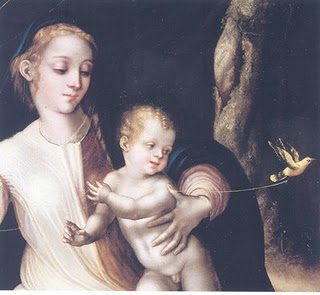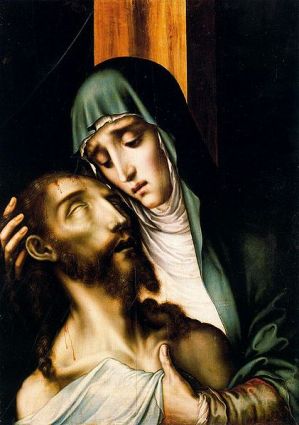| Luis de Morales 1510-86 |
|
|
| Morales was born in Badajoz, Extramadura, near the border with Portugal, well away from the other strong Spanish influences of the era in Madrid and Seville. He was given the nickname `El Divino` because his work consisted mainly of religious subjects, which he painted with superb clarity. Typical of this work is La Virgen del Pajarito in San Agustín, Madrid |
 |
|
.
His early influences are said to have been the Italian Rennaissance painters such as Leonardo, but it is not known whether he had actually ever been to Italy. Another well appreciated work was his La Piedad (Pieta) which is in the Prado in Madrid. |
|
|
He painted many small images in panel format, again of serious religious subjects like Ecce Homo, and Mater Dolorosa. One of the most famous of these detailed works is the series of 20 pictures on the life of Christ which were painted for the church of Arroyo del Puerco |
 |
|
He worked for most of his life in Badajoz for the religious communities, but was called to Seville to create some of the decorations for the monastery El Escorial which King Philip II wanted as the burial place for all Spanish sovereigns. However his painting on Christ Carrying the Cross was not liked by the King, and was moved to a church in Madrid. |
 |
|
His later work definitely showed influences from Flemish painters and it is thought that he had studied in Badajoz with the Flemish painter, Hernando Sturmio. This stands out in technically very correct works like Virgin and Child.
Morales was thought to have died around 1586. |
 |
|
| Other Spanish artists in addition to Morales |
|
|
|









